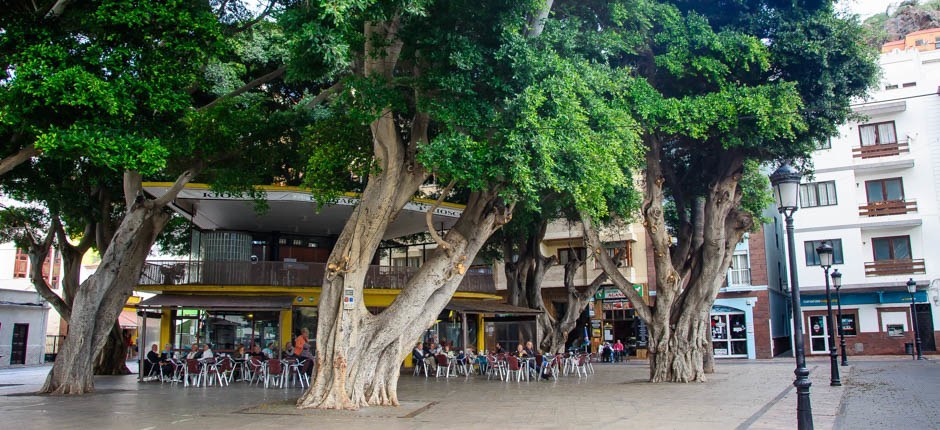 The center is delineated by two squares: Plaza de Americas and Plaza de la Constitución planted with Indian laurels, next to the town hall, several cafes and Casa de la Aguada, also called Casa Condal – Home of the Count. On the inner patio you can see an exhibition devoted to Christopher Columbus' journeys to America and a well: the comrades of the famous explorer supposedly drew water from here, which they later christened the discovered continent. The inscription reminds you of this: With this water, America was bottled ("America was baptized with this water").
The center is delineated by two squares: Plaza de Americas and Plaza de la Constitución planted with Indian laurels, next to the town hall, several cafes and Casa de la Aguada, also called Casa Condal – Home of the Count. On the inner patio you can see an exhibition devoted to Christopher Columbus' journeys to America and a well: the comrades of the famous explorer supposedly drew water from here, which they later christened the discovered continent. The inscription reminds you of this: With this water, America was bottled ("America was baptized with this water").
The main pedestrian area also begins at the Plaza de la Constitución – Real street, also called Calle del Medio. By walking, it is worth paying attention to typical Canarian tenement houses, e.g.. Ayala House (no 24), Ascanio House (no 33) and House of Ruiz de Padrón (no 57).
The Iglesia de la Asunción rises about halfway down the street, where Christopher Columbus reportedly prayed before embarking on a trip to America. The first church was erected on this site in 1450 r., however, it was burned down by pirates in the early 17th century. A three-nave temple, which you can watch today, began to build in 1744 r., combining the surviving elements of the original Gothic
church with elements of baroque architecture, Portuguese and Mudejar. It is worth paying attention to the Puerta de Perdón to the left of the main entrance portal - through the so-called. The Guanches passed through the Door of Forgiveness, which after the unsuccessful uprising of St. 1488 r. abolition was promised. Unfortunately, the conquistadors did not keep their promise and the islanders were severely punished. Inside, beautifully carved wooden altars attract attention.
It is worth visiting the Museo Arqueológico de la Gomera on the church square. On three floors, you can see exhibitions presenting life, religious and secular customs of the first inhabitants of the island. The second museum of note is the Casa-Museo Colón. At home, which Christopher Columbus reportedly spent the night during his stay on the island, you can see an exhibition of pottery from pre-Hispanic times. Just a few blocks from Iglesia de la Asunción rises the 16th-century Ermita de San Sebastian.
There is a nice park opposite the main town beach, and in it stands the Torre del Conde, that is, the Count's tower, considered one of the first buildings erected on Gomera and the best preserved example of military architecture. Apparently corsairs, who came to the island in the 16th century., they couldn't help laughing at the sight of such an unstable defensive structure, however, you have to remember, that the 15th-century tower was used only for defense against the natives, and it was perfect for that (for some time the wife of the governor of the island, killed by the rebellious natives, waited here to help, Hernana perazy). The three floors of the tower house an exhibition of documents relating to the history of the tower and the island.